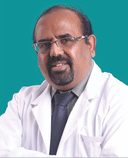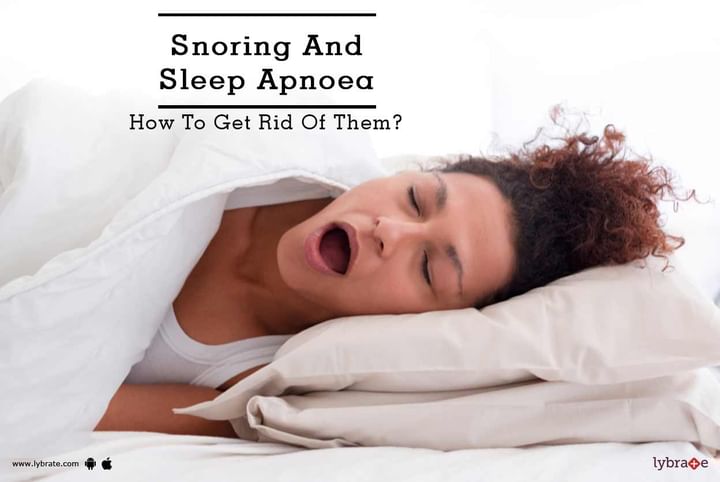Snoring And Sleep Apnoea - How To Get Rid Of Them?
Snoring is something that not only spoils the sleep of your partner but leaves you embarrassed while travelling or any family gatherings. It is more popular among males but these days, women are also facing this issue. The problem only worsens with age and weight. On the other hand, the person suffering from Sleep Apnoea not only affects his and his partner's sleep but puts his life at risk.
Difference Between Sleep Apnoea And Snoring:
There is a huge difference between just Snorers and those suffering from Sleep Apnoea. Sleep Apnoea almost always results in frequent and loud snoring, while disturbing the breathing pattern. This leads the person suffering from Sleep Apnoea to feel tired even after long sleeping hours.
While Sleep Apnoea will almost always lead to loud snoring, snoring alone does not mean that one is suffering from Sleep Apnoea.
Causes And Symptoms
Snoring
● When a person sleeps, the throat muscles relax and the tongue bends backwards. This narrows down the throat to some extent.
● As the person keeps inhaling and exhaling, the throat muscles vibrate. These vibrations lead to snoring. The narrower the throat becomes, the more are the vibrations and the sound.
● The throat muscles tend to relax more with age. This is why snoring usually increases with age.
● If a person has obstructions in the form of Tonsils, Nasal polyps or Deviated nasal septum, the narrowing gets worse and leads to extensive snoring.
● If there is an inflammation in the throat or nose due to some infection or allergy, the throat may become narrower and result in loud snoring.
● In some people, sleeping positions like sleeping on the back or otherwise may abate snoring.
● Alcohol consumption during evening time may abate throat muscle relaxation and give rise to snoring.
Sleep Apnoea
● It is better described as episodes of pauses in breathing for more than 10 seconds at a time.
● The immediate cause of Sleep Apnoea is extensive narrowing or complete collapse of the upper airway.
● As breathing is paused temporarily, it causes a shortfall of Oxygen in blood. As it happens, the heart works harder to make up for it, even when the person is sleeping. This increases the risk of heart attack and stroke.
● It causes disturbance in the natural sleep cycle.
Treatment
Snoring
● Avoidance of risk factors like various allergies
● Correction of sleeping position with training
Sleep Apnoea
● The most common treatment is CPAP (Continuous Positive Airway Pressure). This is a mask like device worn on the nose before sleep. It keeps the upper airway open with a small positive pressure delivered.
● There is also the option of Uvulopalatopharyngoplasty. This is a surgical intervention to remove excess of soft palate tissue and open up the airway. The remaining tissue becomes stiff and thus minimize vibration.
● If there is a Tonsil or Deviated Nasal Septum or Nasal Polyp, it needs to be resected out in order to minimize obstruction to the airway.
Snoring and Sleep Apnoea are very common issues and can be treated by experienced doctors very easily.
Ways to diagnose snoring and sleep apnoea:
The doctors ask about the allergies you are suffering from, as well as your eating patterns, medicines and drinking and smoking habits. The doctor also examines your throat and nasal passages to ascertain if there are any kind of nasal, dental, mouth jaw, or throat deformities that are triggering your snoring. If your doctor will feel that you may be suffering from sleep apnoea, then your partner may be asked to keep a diary noting your sleeping and snoring patterns.
Polysomnography and CPAP Titration are some other ways through which the doctors diagnose sleep apnoea.
Polysomnography: Polysomnography, also called a sleep study, is a type of test that is conducted to diagnose sleep disorders. In this test, the doctors record the brain waves, the oxygen level in the blood, heart rate and breathing, as well as eye and leg movements of the patient.
CPAP Titration: A CPAP titration study is a type of in-lab sleep study that is carried out to calibrate continuous positive airway pressure (CPAP) therapy. It is a common treatment that is used to manage sleep-related breathing disorders including obstructive sleep apnea, central sleep apnea and hypoventilation and hypoxemia.
In case you find out that you are suffering from snoring or sleep apnoea, you should immediately visit a pulmonologist to get the proper treatment.



+1.svg)
